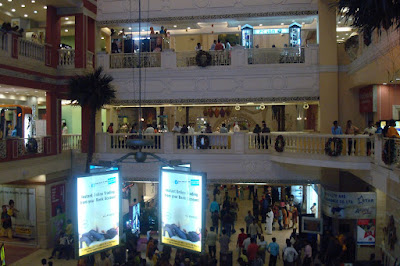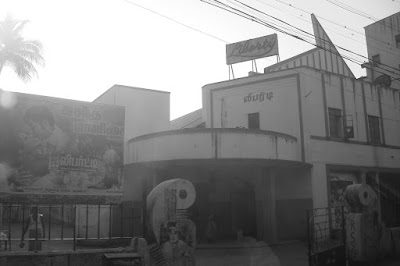With so many instant celebrities around these days, the term 'living legend' has been much abused. In the case of Shri S.Rajam, however, it is the most apt description of the man, because any other attempt to describe him only serves to narrow the definition. He is a painter, but more than a painter; a singer, yet more than a singer; composer, writer, teacher, researcher, a man of many parts, each of which would be a fulfilling life by itself. Yet, going into his 90s, Rajam shows no sign of slowing down. The voice may not hold out for a full concert today, but it is still clear enough to hold down the listener. The eyes sparkle with life, with the joy of being; they are sharp enough to discern, without spectacles, the subtle shades that he colours his paintings in. The energy that he radiates will liven up even the most weary pessimist.
With teachers like Ariyakudi Ramanujam Iyer, Papanasam Sivan and Madurai Mani Iyer, Rajam's musical talent blossomed early; at thirteen, he began giving public performances. By the time he finished school, he had not only given several stage performances but had also acted in three movies - the first being 'Seetha Kalyanam', produced by Prabhat Studios of Pune (R.V.Shantaram, one of the founders of Prabhat, was trying to offset the losses incurred by the first Indian colour film, Sairandhri and offered produce a Tamizh film with the same sets and props). Rajam played Rama and his sister Jayalakshmi played the role of Seetha - this casting offended many and they strongly castigated the father, Sundaram Iyer, for allowing his children to play the roles of husband and wife! (Incidentally, that movie also had Sundaram Iyer acting as Janaka, while two more of his children, Saraswathi and Balachander, acted as Urmila and as a child musician in Ravana's court, respectively)
Maybe that was a factor in Rajam moving onto art; he joined the Government of Madras School of Arts and Crafts. With his immense talent, he completed the six year course in four years. He developed his own style, blending his love of music with classical art to give visual form to musical notes, picturing the flow of several ragas and of course, countless portraits of Carnatic music composers and Tamizh poet-saints across the ages. That his work is still very much in demand is evident from the stack of semi-finished paintings on his table!

Listen to Shri Rajam talk about life in those days or watch him sketching in a notebook.








































